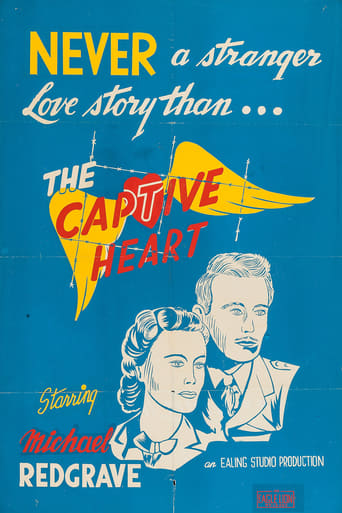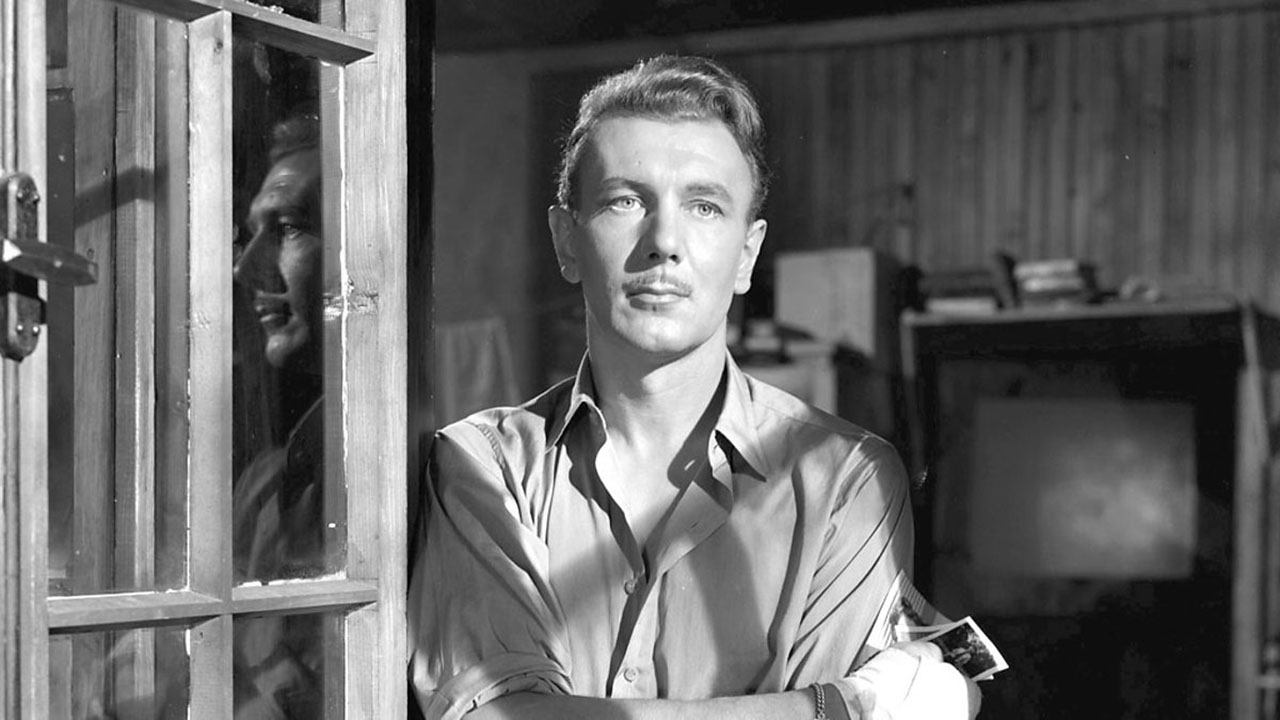kijii
The movie is a broad photo montage of several stories--from one setting--of British soldiers who were captured early in WWII (1941) and placed in a German POW camp. Is depicts what happens to them and their loved ones, back home, as they are separated by time and space. How do the relationships change? How do they remain the same? What holds them together or drives them apart? Four years can be like a lifetime to those it affects. This is no Stalag 17 or Hogan's Heroes-type movie. I found the movie to be very engaging and enjoyable, even as half of a long-range relationship undergoes very big changes. Changes can range anywhere from physical disability, to "Dear John" letters, to birth and/or death. The relationship often—usually—depend on letters and photos back and forth.
Adam Peters
(53%) A very simplistic prisoner of war drama from Ealing studios about a Czech man who changes his identity to that of a British captured soldier to avoid being killed. This looks at the life of both the prisoners and their family back home giving a decent incite into the inner workings of wartime for the vast majority of normal people. The performances are largely standard stuff, with some touches of film noir to the again pretty standard direction. While the plot is predicable with very little in terms of surprises, but the fact that this was released only a few years after the war itself, and as everyone back then who watched this had actually lived through the misery of that page in time, so the makers didn't really attempt to over-aggrandise the events that directors now might feel more inclined. Overall this is so-so matinée stuff that I'd only recommend to big war movie buffs.
Robert J. Maxwell
A diverse group of British prisoners of war wind up in a camp in Holland. Among the genuine men is a Czech escapee sought by the Gestapo, Michael Redgrave. He stumbled across the body of a British officer and assumed his identity. The Brits soon twig and are supportive but a Gestapo visitor, Karel Stepanek, keeps wondering where he met "Captain Mitchell" before. It seems only a matter of time.Escape being impossible, the men have little to do except create tiny gardens and cricket playing fields in order to create a little bit of England in the prison camp. And they wait for the mail. It's their lifeline to the outer world. For most of the men, the news from outside is good but we get to know the stories, in short flashbacks, of those whose messages are troublesome. A man's wife dies in childbirth. Another breaks off his engagement because he doesn't want his girl to know he's blind. Another gets a poison pen letter accusing his wife of infidelity.The man in the worst spot, of course, is Redgrave the impostor. The affable Gestapo officer remarks that Redgrave has been receiving mail but has written no letters in reply. Redgrave must write to a dead man's wife, but if he does, he can't tell her the truth because the mail is censored. In any case, his handwriting will give his secret away to the woman at the other end. So he does what any normal man would do to save his life -- he has his right hand smashed by a sledge hammer and writes with his left hand to mask his real identity.The movie is a tribute to the men who kept a stiff upper lip throughout their four-year incarceration and an encomium to the post. The real subject of the movie is the mail. The plot isn't very clear about the point but I believe the delivery of mail was handled through the International Red Cross in Switzerland.The men boarded up in camp don't really DO very much. There is no combat and only a few shots are fired. (They accidentally kill a guard dog.) There are longueurs, but in the end many of the prisoners are repatriated and sent back to England, including Redgrave, who manages to be included only at the sacrifice of another man's good luck.The scenes of the men's return are moving and adroitly handled. No one breaks into sobs. Deaths at home are accepted. Men's conflicts are resolved, happily in each case, and their families' too.It isn't a bad film, especially considering its period -- 1946. The war had just ended and no one was concerned about the Germans' feelings, yet the Germans we see are uniformly good-natured and reasonable. Not that we get to see much of them. And of course there is always the threat of the Gestapo for Redgrave to worry about. And none of the girls back home are glamorous either. Like their men, they look like ordinary people you might bump into at the supermarket.It's not as involving as, say, "The Best Years of Our Lives." That film dealt exclusively with the post-war adjustment of veterans. The bulk of this film, on the other hand, sticks us in a prison camp with nothing to do but plant leeks -- or maybe asparagus, which take seven years to mature. And there is no exciting central plot, no coordinated smash out, as in "The Great Escape." It's all rather understated, stiff upper lip, even Redgrave's final conciliatory phone call to the dead Mitchell's widow isn't heard against the background of celebratory fireworks on V-E Day.If it's a bit slow in the middle, it picks up the pace at the end and is a good watch.
writers_reign
The old saying if you're going to steal, steal from the best rings true in this case which is essentially In Which We Serve in khaki; both feature men in confined spaces reminiscing about their lives in Civvy Street with the main difference being that instead of a lifeboat we have a prison camp where a similar cross-section of Upper, Middle and Working Classes learn to rub along more or less amicably. For good measure they even ripped off the celebrated scene from Casablanca where the German singing is drowned out by 1) the Marseillaise and 2) Roll Out The Barrel, but the most blatant rip-off from the Coward masterpiece is in the two married couples, respectively Bernand Miles/ Joyce Carey/ John Mills/Kay Walsh and Jack Warner/Gladys Henson/Mervyn Johns/Rachel Thomas, who were friends before the war so much so that the two wives move in together for the duration; in each film one wife is killed and the news is broken to the widower via a letter from home to the other man so here Jack Warner gets to tell Mervyn Johns that Rachel Thomas is dead. This to one side The Captive Heart remains a compelling film because at its heart (sorry about that) is the wonderfully low-key love story between Michael Redgrave and his real-life wife Rachel Kempson of which 95 per cent is played out via under-stated letters which only mention love between the lines. The support is largely sound and trivia buffs will be interested to note that two years earlier (1944) Meriel Forbes had married Ralph Richardson so that the film boasted the real-life wives of two future theatrical knights. One to buy on DVD.


 AD
AD



